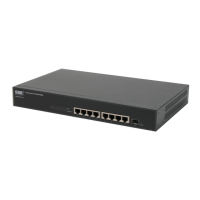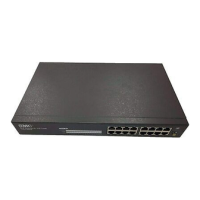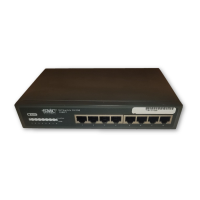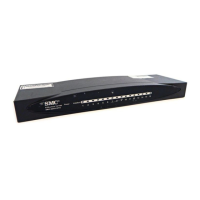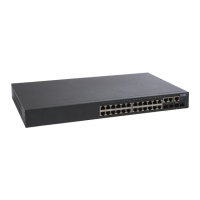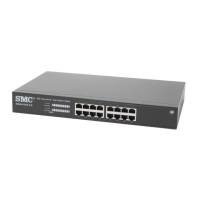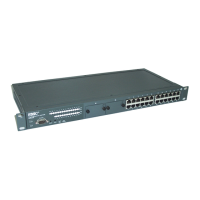Description of Hardware
1-3
1
Description of Hardware
10/100/1000BASE-T Ports
The switch contains 8 RJ-45 ports that operate at 10 Mbps or 100 Mbps, half or full
duplex, or at 1000 Mbps, full duplex. Because all ports on the switch support
automatic MDI/MDI-X operation, you can use straight-through cables for all network
connections to PCs or servers, or to other switches or hubs. (See “1000BASE-T Pin
Assignments” on page B-3.)
Each of these ports support auto-negotiation, so the optimum transmission mode
(half or full duplex), and data rate (10, 100, or 1000 Mbps) can be selected
automatically. If a device connected to one of these ports does not support
auto-negotiation, the communication mode of that port can be configured manually.
SFP Slot
The Small Form Factor Pluggable (SFP) transceiver slot is shared with RJ-45 Port 8.
In its default configuration, if an SFP transceiver (purchased separately) is installed
in the slot and has a valid link on its port, the associated RJ-45 port is disabled and
cannot be used. The switch can also be configured to force the use of an RJ-45 port
or SFP slot, as required.
Port and Power Status LEDs
The switch includes a display panel for key system and port indications that simplify
installation and network troubleshooting. The LEDs, which are located on the front
panel for easy viewing, are shown below and described in the following tables.
Figure 1-3 Port and Power LEDs
LINK/ACT
PoE
Port Status LEDs
Power Status LED
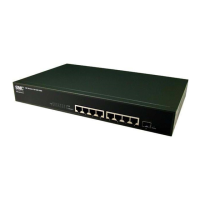
